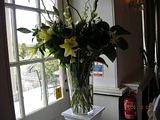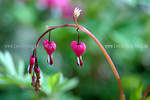


Circle Yellow, And Won't Be Boring To See It, This Flower Photo Almost Few Month Becomes My Favorite Wallpaper...
Asim Shah posted a photo:

Flower That Have a Circle Purple...
Robert Nyman
Like, flowers
pollen-flowers posted a photo

tall spectacular vase display on our new pedestals - 061.jpg

Keywords:

Flower
Exotic flower

Yellow, flower with bug around...


Flowers - thud5i7mcbouyndvwlb3oi.jpg
pollen-flowers posted a photo

South Lodge - gorgeous autumnal display - 062.jpg

Another yellow flower
Asim Shah posted a photo:
beetography
bleedinghearts-DSC_1675.jpg

Robert Nyman
Like, flowers
Robert Nyman
Like, flowers


Flower

A few years ago if someone had mentioned gabions I wouldn't have known what they were talking about. They were something that was used in civil engineering, large scale industrial landscaping - a million miles away from domestic gardens. Now it seems they are becoming the cool thing to have.
 At Tatton there are gabions in the show gardens, in the back to backs and on the trade stands - people are taking home DIY versions!
At Tatton there are gabions in the show gardens, in the back to backs and on the trade stands - people are taking home DIY versions!
Basically a gabion is a metal - usually steel, cage filled with stones/rocks or various heavy materials. They are usually used to retain soil in banks and terraces or as barriers. I've seen taller, slim ones used as a wall and smaller, cubed ones made into seats - the permutations are endless, as demonstrated by the two young designers of the Visionary garden, Cubed3, at this year's Tatton.
 This gold medal winning design is a modular scheme, gabions are linked together like building blocks and used in different ways - some are filled with rocks as foundations, some are filled with soil and planted and some are placed in the pond, allowing you to walk over the water's surface. Larger cages have been left empty and plants are able to grow up through them - it's very effective.
This gold medal winning design is a modular scheme, gabions are linked together like building blocks and used in different ways - some are filled with rocks as foundations, some are filled with soil and planted and some are placed in the pond, allowing you to walk over the water's surface. Larger cages have been left empty and plants are able to grow up through them - it's very effective.
On the Edible Trends garden the Reaseheath College team have filled their gabions with carefully placed layers of stones and wood in decreasing sizes, creating a very pleasing pattern and a haven for wildlife. Apparently it took them ages to do but it looks fantastic.
A very 'green' way to fill your gabions is with odd bits of bricks, slates and tiles left over from building jobs, plus any empty bottles you may have accumulated. This is what they have used on A Place for Waste, another gold medal winning garden.
As you look around the show you will see all sorts of shapes and fillings and gabions used in many ways. I am feeling quite inspired and am planning to try something with sempervivums and I rather like the idea of turf cubes.
Info from:
Private Club








No comments:
Post a Comment